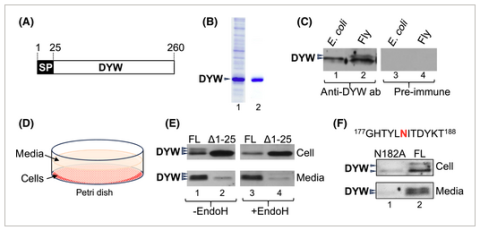
Abstract
Sleep during the midday, commonly referred to as siesta, is a common trait of animals that mainly sleep during the night. Work using Drosophila led to the identification of the daywake (dyw) gene, found to have anti-siesta activity. Herein, we show that the DYW protein undergoes signal peptide-dependent secretion, is present in the circulatory system, and accumulates in multiple organs, but, surprisingly, it is not detected in the brain where wake–sleep centers are located. The abundance of DYW in adult flies is regulated by age, sex, temperature, and the splicing efficiency of a nearby thermosensitive intron. We suggest that DYW regulates daytime wake–sleep balance in an indirect, extracerebral manner, via a multi-organ network that interfaces with the circulatory system.
